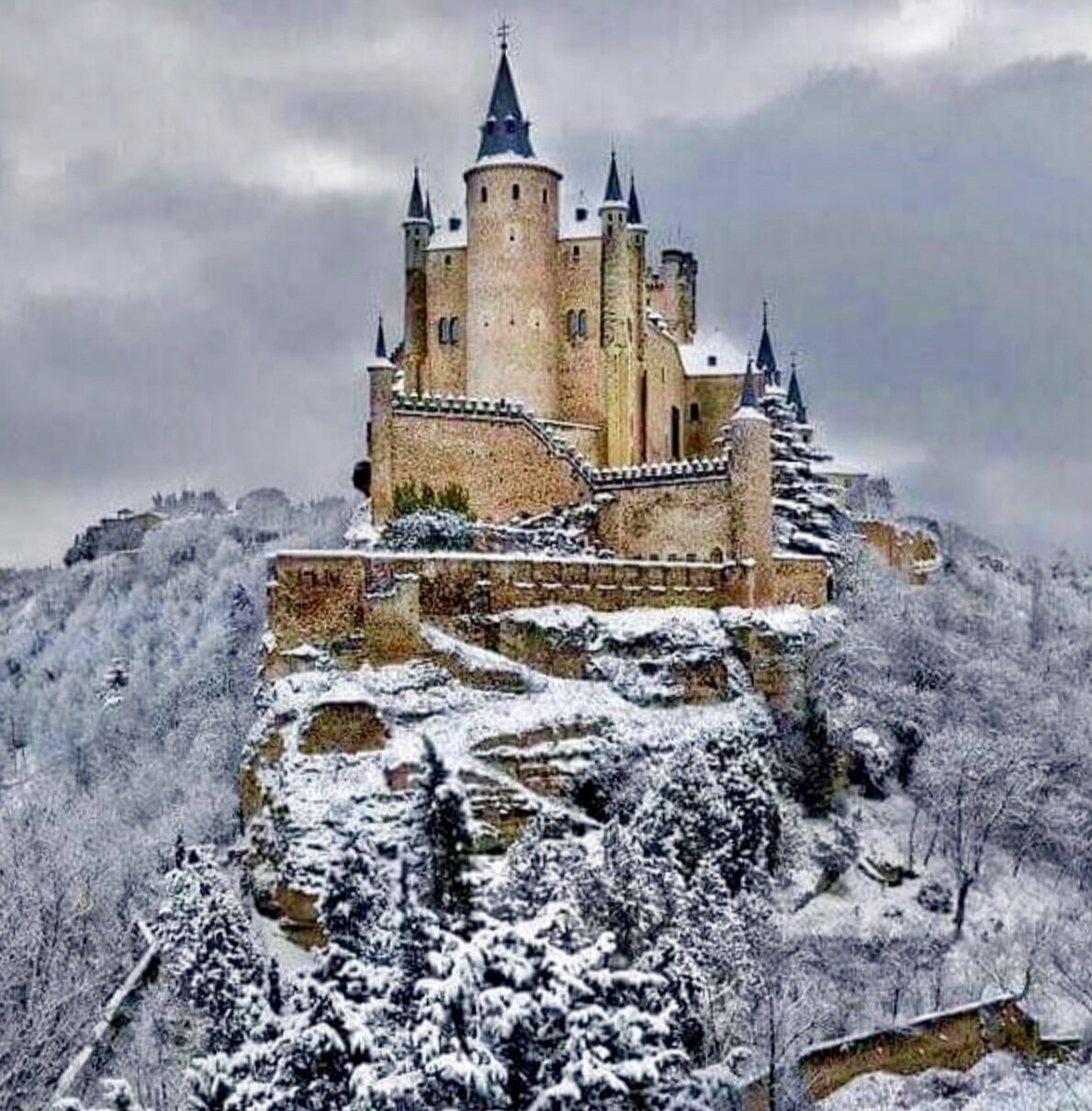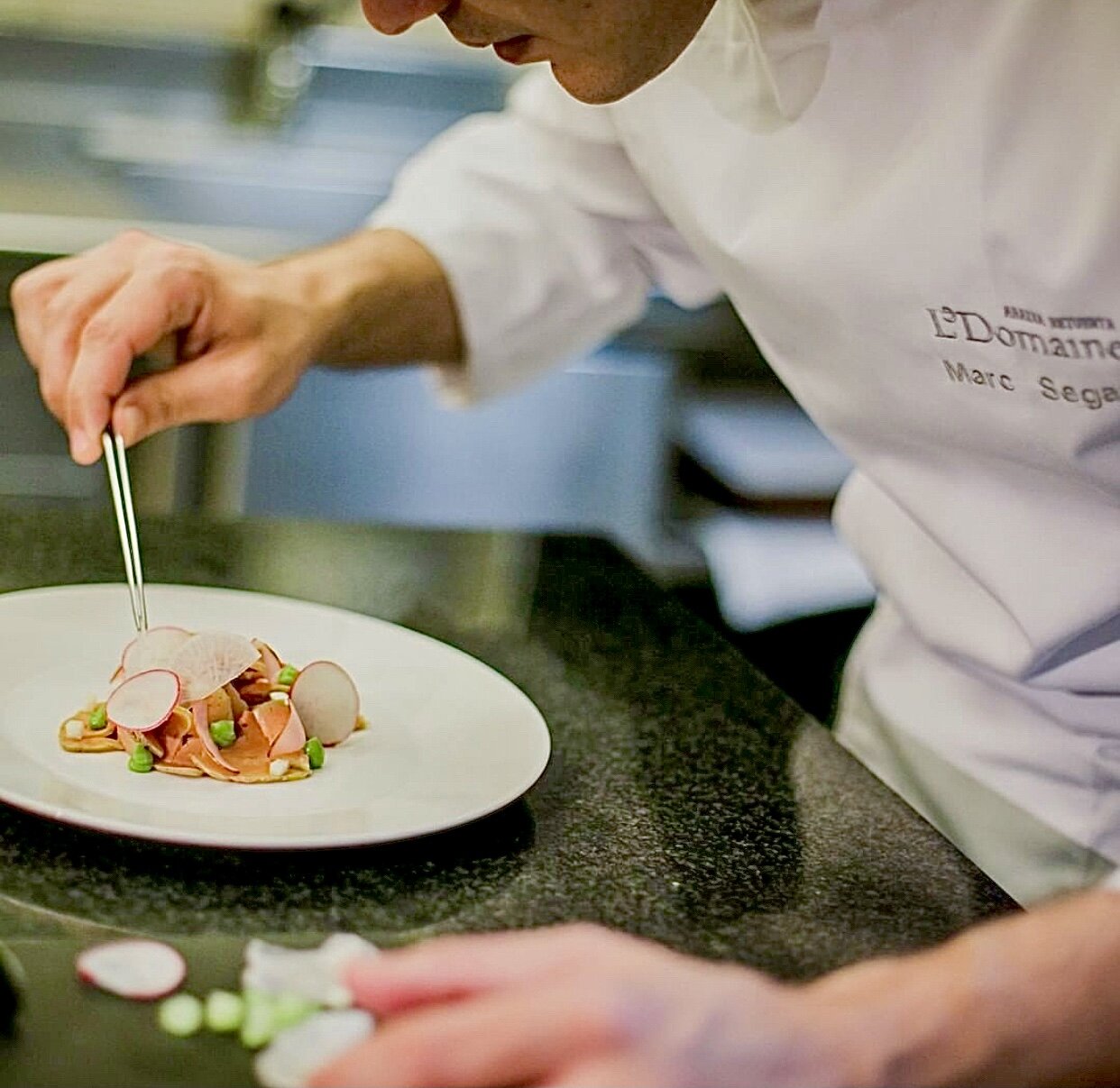Castilla y Leon, Home of Spain's Best Kept Secret: Wine, Dine and Stay in a Luxe 12th Century Abbey Overlooking World-Class Vineyards
/This month, Facebook’s World Wine Travel group is headed to the beautiful and historic Castilla y Leon region, located in the northwest of Spain between Madrid and the Portuguese border. As my yearning for travel continues, I chose to focus on Abadia Retuerta LeDomaine, a magnificent property that includes a winery, as well as a luxurious hotel (formerly a monastery) with a spa and Michelin-starred restaurant.
Castilla y Léon, a UNESCO World Heritage Hotspot
As the largest autonomous community in Spain, Castilla y León (in red on the map) is home to over 60% of Spain’s architectural and cultural heritage sites, as well as to a number of top wine producing areas. The region’s rich cultural history dates back thousands of years and today, there are more UNESCO world heritage sites in Castilla y León than in any other region in the world.
The area’s landscape of gentle hills is defined by breathtaking national parks, an ancient glacial plateau and umbrella pine forests, along with fascinating old cities, like Segovia, Salamanca and Ávila to name a few. Castilla y León is blessed with an abundance of well-preserved medieval monasteries and forts, as well as hundreds of castles, hence the region’s moniker, La Tierra de Los Castillos (The Land of the Castles).
Photo of Alcázar de Segovia, one of the most amazing castles in all of Spain. And, yes, this part of Spain gets snow in the winter!
Photo: @madridlowcost on Instagram.
Wine Production, a Tempest of Tempranillo
Castilla y Leon is home to several wine producing DOs (Denominación de Origen, meaning a quality-controlled appellation), including the most well-known Ribera del Duero, Rueda, and Toro.
During the past few decades, the region has been making its mark in the world of fine wine, especially since the late 1990s when the craze for Ribera del Duero wines helped the entire region gain international notoriety. Before then, only the name Vega Sicilia, and its sought-after Unico Gran Reserva, was known to consumers outside of Spain.
Castilla y León is primarily regarded for its red wines dominated by the Tempranillo grape, yet the fresh and citrusy Verdejo white wines made in the Rueda appellation are also gaining in popularity. Castilian red wines are symbolic of traditional Spanish taste: powerful, full-bodied, and fruit-forward with a hint of oak.
Unsurprisingly, they pair well with the region's coveted tapas, including locally made cheeses and the famous Jamón Ibérico (Iberian ham), as well as traditional dishes like cochonillo (roast suckling pig), lechazo asado (roast lamb), morcilla de Burgos (a black pudding with rice), sopa castillana (a soup made of bread, garlic and egg) and barco de Ávila (a famous creamy bean dish).
Spotlight on Abadia Retuerta LeDomaine, An Enchanting Retreat Amongst Spectacular Vineyards
When perusing Tripadvisor reviews, I always take “extraordinary” or “best in the world” ratings with a grain of salt. But after seeing hundreds of outstanding reviews for Abadia Retuerta LeDomaine, I knew I was about to discover something special.
photo: @abadiaretuertaledomaine on Instagram
This unique spa hotel is set within a converted Baroque-Romanesque abbey, surrounded by vineyards. Opened in 2012 and featured in the New York Times “52 Places to Go in 2018” list, Abadia Retuerta LeDomaine’s Tripadvisor reviews were over-the-top about the beauty of the buildings (“superb restoration of the old Abbey”), service (“attentive yet discreet”), spa (“serene”), quality of the food (“just perfect.”) and wines (“outstanding”). Many of the reviewers exclaimed that Abadia Retuerta LeDomaine is the best hotel in Spain, if not the world!
If that’s not the highest of praise, I don’t know what is!
The hotel, a 5-star Relais & Chateau with just 30 rooms, was formerly a residence for monks and called Santa Maria de Retuerta Abbey. Ann Abel writes in Forbes.com that the building is the product of a visionary and insightful restoration by Swiss architect Marco Serra. “His main goal was to preserve the historic structure,” says Abel, “by ensuring that the modern adaptations are easily differentiated from the original architecture.”
photo: @abadiaretuertaledomaine on Instagram
photo: @abadiaretuertaledomaine on Instagram
In addition to the property’s impeccable restoration, hotel guests are provided with a wide range of unique experiences centering around wine (tastings, seminars, winery tours), art (piano concerts, guided tours of the abbey), gastronomy (mushroom hunting, Abbey vegetable garden, five restaurants ranging from casual to fine dining), nature (vineyard tours, grape harvesting, picnics, horseback riding, bike tours) and wellness (yoga, spa treatments, mindfulness experiences).
A Divine Wine, Abadia Retuerta
Abadia Retuerta, a relatively new winery, was born in 1996, during Castilla y León’s wine boom years, and it has quickly forged a reputation for high quality wines and innovative vineyard and winery practices such as a state-of-the-art gravity flow irrigation system. The winery and vineyards, planted with Tempranillo, Cabernet Sauvignon, Merlot, Syrah and Petit Verdot, are situated within the hotel’s property, just to the west of Ribera del Duero.
Unlike many of their neighbors though, Abadia Retuerta does not count itself among the 200-plus wineries grouped under the DO Ribera del Duero, falling instead into the more flexible 'Vino de la Tierra de Castilla y Leon,' classified as a VdT, Vino de la Tierra, or wines of the land. The VdT designation, compared to the stricter DO and DOCa levels, has only minor requirements for site, grape variety, yields and aging.
Therefore, while DO wines may have a bit more prestige, Abadia Retuerta, as a VdT has more freedom to experiment, especially when it comes to choosing and blending grape varieties. With plots just outside the Ribera del Duero appellation, the winery has had great success with a winning combination of excellent terroir and the ability to be innovative with their winemaking.
Photo: Lisa Denning
Abadia Retuerta’s best-known wine is the Selección Especial. Unlike the winery’s single vineyard wines, it is produced from a selection of the best grapes from each of the vineyards, combining the richness of Tempranillo, with the elegance of Cabernet Sauvignon and the strength of Syrah.
For this month’s #WorldWineTravel Twitter chat, I was able to secure a sample of the 2014 Selección Especial, a beautiful blend of 75% Tempranillo, 15% Cabernet Sauvignon and 10% Syrah.
Tasting notes
Dark red colour with a bold and aromatically complex nose—a wine you should take several long sniffs of before each sip! On the palate, it has intense dark red fruity notes (blackberry, cherry, plum) along with intriguing undertones of spice, cedar, oak, cocoa and tobacco. Rich, muscular and expressive, yet surprisingly elegant and polished, the wine’s zippy freshness helps to keep it well balanced. The silky tannins, and long, harmonious and mineral finish add to the wine’s appeal.
This is a wine that doesn’t tire out the palate. In fact, I wished for more after the last drop was gone. Beautiful now, it will develop even further in the bottle over the next few years. I suggest opening it two to three hours before serving, as it needs a bit of air to bring out all its complexity.
Check out these great WineWorldTravel adventures in Castilla y León by my fellow writers.
Allison of AdVINEtures declares Ribera del Duero: Spain’s Rising Star.
Co-host Lynn of Savor the Harvest introduces us to Unconventional in Castilla y Leon – Ismael Gozalo and MicroBio Wines.
Camilla of Culinary Adventures with Camilla pairs Patatas a lo Pobre + Losada Bierzo 2017.
Steve of Children of the Grape explores Hemingway and the Plains of Spain.
Wendy of A Day in the Life on the Farm explains why Abadia Retuerta Seleccion Especial is indeed a Special Selection.
Terri at Our Good Life is Exploring Castilla y Leon Through Wine and Food.
David at Cooking Chat tempts us with his Steak Picado Recipe with Ribera del Duero Wine.
Jeff of Food Wine Click! reveals A Different Take on Castilla y Leon.
Martin of ENOFYLZ Wine Blog discusses Mesmerizing Mencia – The Star Grape of Bierzo; 2018 Raúl Pérez Ultreia St-Jacques.
Robin at Crushed Grape Chronicles shares Rueda and Verdejo Just Keep Rolling with the #1 White Wine in Spain!
Nicole at Somm’s Table tells us about A Phenomenal Feast at Emilio Moro.
Linda at My Full Wine Glass discusses Rueda Verdejo – A Crisp White Alternative to Sauvignon Blanc.
Susannah at Avvinare is Exploring Rueda’s Signature Grape, Verdejo.
Lauren at The Swirling Dervish shares Dominio del Pidio Albillo: Tasting an Unusual Spanish White Wine in Miami.
Gwendolyn at Wine Predator posts Cristina Forner Leads Marques de Cacerés: Her Verdejo from Rueda with Barbacoa Tacos.

































